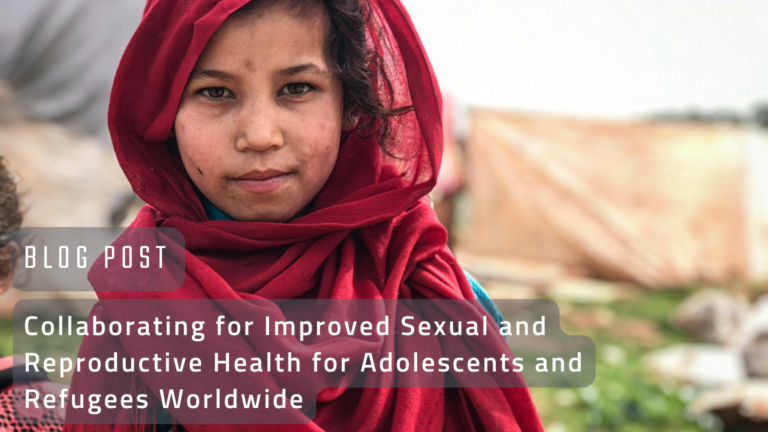By Zohra S Lassi and Salima Meherali
About the Authors
Dr. Zohra Lassi (PhD) is Associate Professor and NHMRC Emerging Leader-2 (EL2) Fellow at the Robinson Research Institute and School of Public Health, University of Adelaide, South Australia, Australia.
Dr. Salima Meherali (PhD) is an Assistant Professor in the School of Nursing at the University of Alberta.
Global migration trends have increased over the years. Several factors are driving this trend, including economic opportunities, political instability, conflict, environmental change, and globalization. Refugee and immigrant adolescents face a myriad of challenges and vulnerabilities that can significantly affect their well-being. and in today’s interconnected world, the challenges facing adolescent refugees and migrants extend far beyond the borders of any one nation [1]. Whether it’s navigating legal complexities, adapting to new cultures, or simply finding a sense of belonging, their journeys are characterized by resilience and shared experiences. Navigating the complexities inherent in sexual and reproductive health and rights (SRHR) adds another layer of difficulty to their already difficult journeys. However, by recognizing the universal nature of these challenges and strengthening collaborative efforts among nations, we can address the SRHR needs of these vulnerable populations more effectively.
Global challenges in SRHR for refugee and migrant adolescents: Adolescence is a critical period characterized by significant physical, emotional and psychosocial changes [2]. For teenagers from migrant and refugee backgrounds, this journey is often compounded by the challenges of displacement and resettlement. Despite the diversity of their experiences, these young people share common struggles that cross borders, particularly in the scope of SRHR.
Refugee and immigrant adolescents face many barriers to accessing SRHR services and information. Language barriers, cultural differences, lack of knowledge about available resources, and unfamiliarity with health care systems hinder their ability to make informed decisions about their sexual and reproductive well-being. In addition, they may face stigma, discrimination and gender-based violence, exacerbating their vulnerability [3]. These challenges, from adapting to unfamiliar cultural norms to dealing with language barriers, discrimination and social exclusion, hinder a sense of well-being and belonging. Many also carry the burden of trauma and loss resulting from displacement, further complicating their journey of self-discovery and identity formation [4]. These experiences have profound effects not only on SRHR but also on their physical and mental health.
Cooperation between nations is undeniably imperative to effectively address the SRH needs of refugee and migrant adolescents. By adopting a synergistic approach, countries can pool their resources and expertise to formulate comprehensive solutions that adequately address the unique challenges faced by these populations.
The leadership and implementation of such policies greatly benefit from the involvement of a wide range of stakeholders. International organizations such as the World Health Organization (WHO) and the United Nations Population Fund (UNFPA), among others, can provide technical assistance and coordination. Collaboration with local authorities, community leaders and civil society organizations is essential to ensure the effective implementation of these policies at the grassroots level. However, cooperation faces challenges, particularly in regions affected by political instability and conflict, which are the main drivers of migration. Overcoming these challenges requires adopting innovative approaches and engaging with a variety of actors, including peacebuilding organizations. Building partnerships between governments, humanitarian agencies and local communities becomes imperative to comprehensively address SRHR needs in these contexts.
Towards an inclusive and just future: The SRHR needs of refugee and migrant adolescents are complex and multifaceted, but not difficult to address. By recognizing the universality of these challenges and strengthening collaborative efforts across nations, we can create an inclusive and just future for all young people. Let’s join hands and work for a world where every teenager, regardless of their background, has access to the information and services they need to make informed decisions about their sexual and reproductive health. Together, we can build a brighter and healthier future for generations to come.
Bibliographical references:
- (2019). Vulnerabilities of migrant and forcibly displaced children. UNICEF. Available in: Accessed on: March 7, 2024
- Lassi ZS, Salam RA, Das JK, Wazny K, Bhutta ZA. (2015) An incomplete agenda for adolescent health: Opportunities for interventions. Semin Perinatol. 39(5):353-60
- Alessi EJ, Cheung S, Yu M. (2021). A scoping review of experiences of violence and abuse among sexual and gender minority migrants across the migration trajectory. Trauma, violence and abuse. 22(5).
- Shahimi F, Block K, Alisic E. (2024). Sense of identity among young people with a refugee background: a scoping review. Child Youth Rev. 157:107378
- Aibangbee M, Michael S, Mapedzahama V, Liamputtong P, Pithavadian R, Hossain Z, Mpofu E, Dune T. Sexual and reproductive health and rights of young migrants and refugees: a scoping review to inform policies and programmes. International Journal of Public Health. 2023;68:1605801
